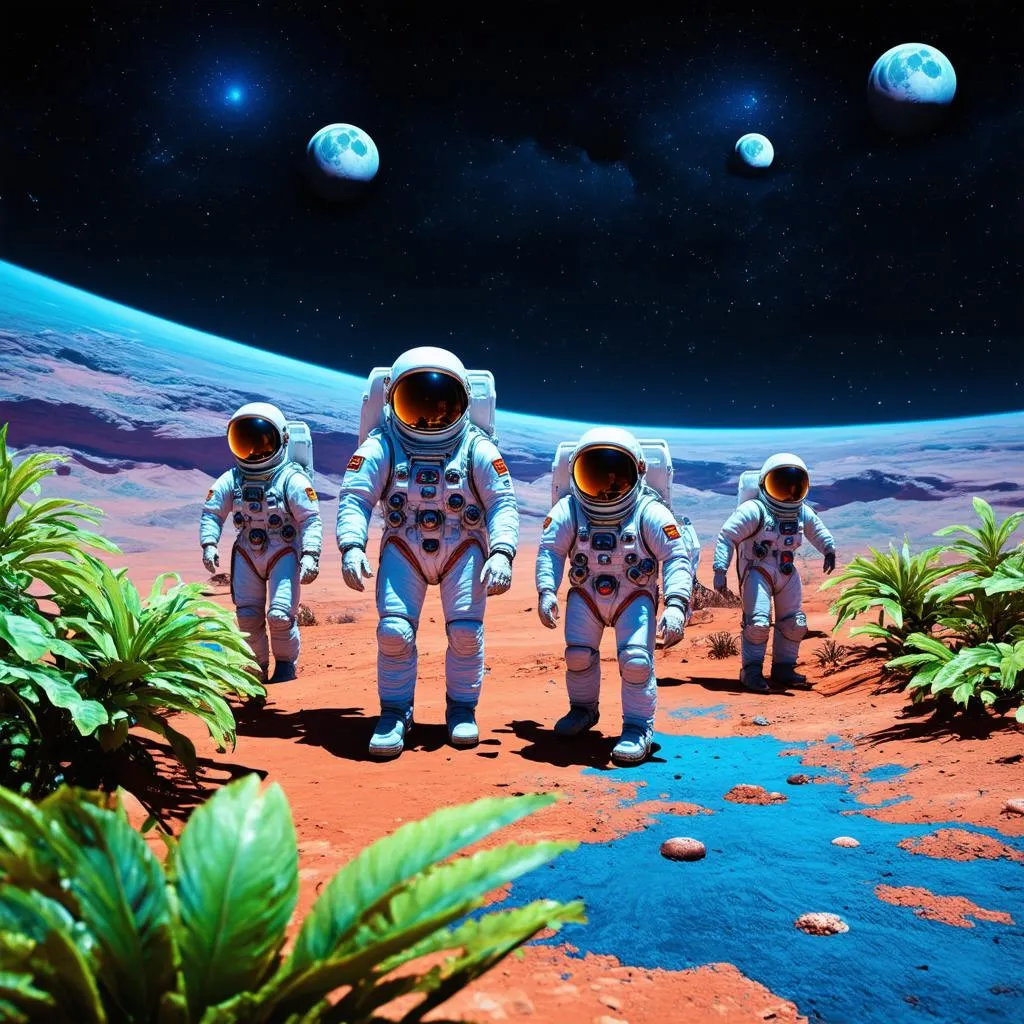Have you ever gazed up at the night sky, mesmerized by the twinkling stars, and wondered what lies beyond our own solar system? That, my friends, is the allure of interstellar travel – the concept of venturing beyond our celestial backyard to explore the vast expanse of the cosmos. But what exactly is interstellar travel, and is it even possible? Buckle up, space cadets, as we embark on a journey to unravel the mysteries of this mind-boggling concept.
Venturing into the Void: Understanding Interstellar Travel
Interstellar travel, in its simplest terms, refers to the idea of traveling between stars. Sounds easy enough, right? Well, not quite. The distances between stars are incredibly vast, measured in light-years – the distance light travels in a year, which is a staggering 5.88 trillion miles! To put that into perspective, the Voyager 1 spacecraft, the farthest human-made object from Earth, has been hurtling through space for over 40 years and is only a mere fraction of the distance to the nearest star system, Alpha Centauri.
The Challenges of Interstellar Travel: A Cosmic Obstacle Course
Just like planning a road trip, a journey to another star system comes with its own set of challenges:
1. Distance: A Space Odyssey
As mentioned earlier, the sheer distance between stars is mind-boggling. Even traveling at the speed of light, a trip to Alpha Centauri would take over four years! Current spacecraft technology would take tens of thousands of years for the same journey.
2. Speed: The Need for Cosmic Velocity
To overcome these immense distances, we need to develop spacecraft that can travel at a significant fraction of the speed of light. Concepts like fusion propulsion and antimatter engines have been proposed, but they remain in the realm of theoretical physics for now.
3. Energy: Fueling the Cosmic Engine
Powering a spacecraft for interstellar travel requires immense amounts of energy. Traditional chemical rockets simply won’t cut it. We need to explore alternative energy sources like nuclear fusion or even more exotic concepts like harnessing the power of black holes.
4. Time: The Relativity Factor
Here’s where things get really interesting. According to Einstein’s theory of relativity, time is relative. This means that time slows down for objects traveling at high speeds. While this might sound like science fiction, it could have significant implications for interstellar travelers. For those on board a spacecraft traveling at a significant fraction of the speed of light, time would pass slower than for those back on Earth. This phenomenon, known as time dilation, could theoretically allow humans to travel vast distances within their lifetimes, although generations would pass on Earth in the meantime.
Interstellar Travel: Science Fiction or Future Reality?
While the challenges of interstellar travel are daunting, human ingenuity knows no bounds. Scientists and engineers around the world are constantly pushing the boundaries of space exploration.
Some potential solutions for achieving interstellar travel include:
- Warp Drives: This technology, often depicted in science fiction, involves bending spacetime to create a shortcut between two points. While still highly theoretical, some physicists believe that warp drives could be possible within the framework of Einstein’s general relativity.
- Generation Ships: These massive spacecraft would house entire communities and ecosystems, allowing multiple generations to live and die on board during the centuries-long journey to another star.
- Suspended Animation: Another concept borrowed from science fiction, suspended animation could potentially allow humans to enter a state of hibernation, slowing down their biological processes and enabling them to survive long-duration space travel.
Interstellar Travel: The Ultimate Journey of Exploration
Interstellar travel represents the ultimate human adventure – a chance to explore new worlds, discover alien life, and unravel the mysteries of the universe. While we may not have the technology to achieve interstellar travel today, the pursuit of this dream continues to inspire scientific innovation and expand our understanding of the cosmos. Perhaps one day, our descendants will look up at the night sky, not with wonder, but with the knowledge that among those distant stars lie new homes, new discoveries, and a future filled with infinite possibilities.
 Spaceship traveling through a wormhole
Spaceship traveling through a wormhole
FAQs about Interstellar Travel
How long would it take to travel to the nearest star?
At current spacecraft speeds, a journey to Proxima Centauri, the nearest star to our Sun, would take tens of thousands of years. However, theoretical technologies like warp drives or fusion propulsion could potentially reduce travel times to years or even decades.
Is interstellar travel possible with current technology?
No, interstellar travel is not currently possible with existing technology. The distances involved and the energy requirements are far beyond our current capabilities.
What are the biggest challenges to interstellar travel?
The primary challenges include the vast distances between stars, the need for extremely fast spacecraft, the enormous energy requirements, and the physiological effects of long-duration space travel on humans.
Travelcar.edu.vn: Your Guide to Cosmic Exploration
Interested in learning more about the wonders of space travel? Visit travelcar.edu.vn, your one-stop source for all things travel-related, including the latest news and insights on space exploration.
 A group of astronauts exploring a vibrant alien planet
A group of astronauts exploring a vibrant alien planet
Embark on Your Own Adventure
While interstellar travel may still be a distant dream, you can start exploring the wonders of our own planet today. Visit travelcar.edu.vn to discover amazing destinations, plan your next adventure, and quench your thirst for exploration.